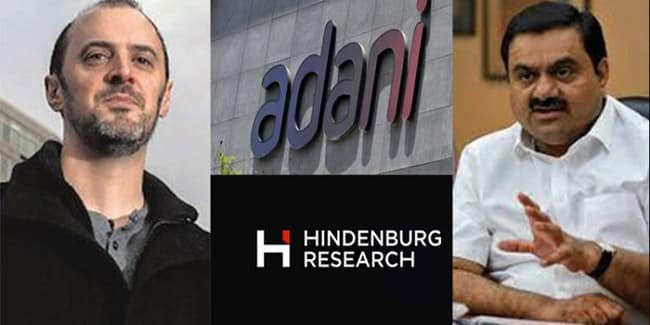The ongoing legal dispute between the Adani Group and Hindenburg Research has reached the Supreme Court, generating significant attention and intrigue. This article provides a neutral analysis of the case and examines the key arguments presented during the hearing on May 12. As the legal battle unfolds, stakeholders and the public eagerly await the court’s decision, which could have far-reaching implications for both parties involved.
Background:
The conflict between the Adani Group, a conglomerate with diverse business interests, and Hindenburg Research, an investment research firm, emerged when Hindenburg released a scathing report questioning the transparency and financial practices of the Adani Group. The report alleged irregularities and discrepancies, raising concerns about corporate governance within the conglomerate.
Supreme Court Hearing:
The Supreme Court hearing on May 12 marked a crucial juncture in the legal proceedings, with both parties presenting their arguments before the esteemed bench. The court’s role is to impartially assess the evidence and determine the validity of the claims made by Hindenburg Research against the Adani Group.
During the hearing, the Adani Group vehemently refuted the allegations made by Hindenburg, asserting that the report contained inaccuracies and misleading information. The conglomerate presented extensive documentation and financial records to substantiate their position, emphasizing their commitment to transparency and adherence to regulatory frameworks.
Hindenburg Research, on the other hand, stood by the findings outlined in their report and argued that their research was conducted diligently and in the interest of investor protection. They highlighted specific instances that they claimed demonstrated questionable practices within the Adani Group.
Public Interest and Implications:
The Adani-Hindenburg legal battle has garnered substantial public interest due to the high stakes involved and the potential ramifications for both parties. The outcome of the Supreme Court case could influence market perceptions of the Adani Group, impacting its reputation and investor confidence. Additionally, the ruling may set a precedent for future cases involving allegations of corporate misconduct and could shape the regulatory environment governing conglomerates in India.
It is worth noting that the Supreme Court’s role is to evaluate the evidence presented and make an impartial judgment based on legal principles. The court will carefully consider the arguments made by both parties before delivering its verdict. This process underscores the importance of due process and the rule of law in resolving complex business disputes.
Conclusion:
The Supreme Court hearing regarding the Adani-Hindenburg row has attracted significant attention and scrutiny. As the legal battle unfolds, stakeholders and the public await the court’s verdict, which will determine the validity of the allegations raised against the Adani Group. The outcome of the case holds profound implications for both parties involved and could shape future discussions on corporate governance and transparency in India. As the legal process progresses, it is crucial to maintain a neutral stance and allow the judiciary to independently assess the evidence presented, ensuring a fair resolution to the dispute.







